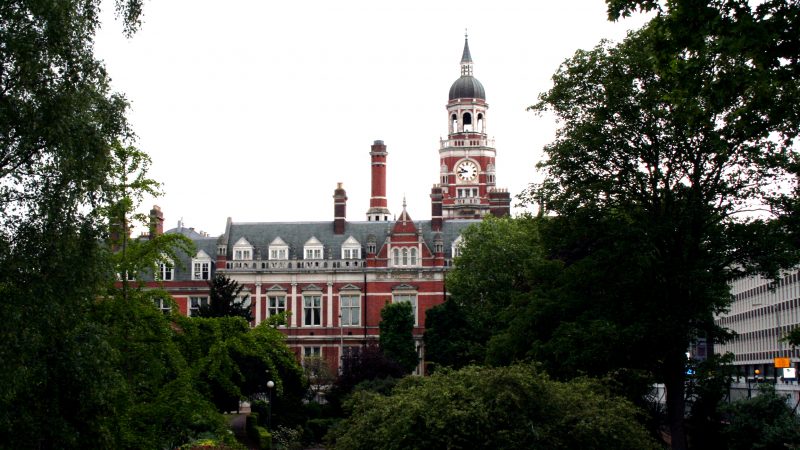
Boroughs like Croydon have been among the worst affected by coronavirus, with a death rate around double that of the national level. This has been mainly influenced by existing inequalities – overcrowded housing, poor air quality, health and, of course, race. Yet as we look to emerge from one crisis, we must not forget that before we had heard of Covid-19 we were already facing another: a climate and ecological emergency of vast proportions. It is one that we have hardly started to deal with. Last year, Croydon Council – along with many others – declared a climate emergency, and the recovery from the pandemic presents us with a unique chance to change direction on the climate crisis.
How to respond? Conjuring up the spirit of Clement Attlee and his post-war plan, Ed Miliband has added Labour’s voice to call for the most ambitious green recovery programme in the world. If fully heard and answered, this call could be the first serious start to addressing the climate and ecological crisis while helping to tackle the inequalities highlighted by Covid-19. Black Lives Matter, climate change and shocking levels of inequality are of course related – solving one often helps solve the other. In short, let’s organise the green recovery so that we address the collective fight that’s required, rather than a series of separate challenges.
It would be popular. Emerging from the crisis and having experienced positive side-effects of the lockdown such as better air quality, people rightly want something better for the long term. Recent YouGov polling reveals that nearly 75% of people now want better protections for the environment, and over 50% of people would now vote for a political party that invests in nature rich green spaces.
There are significant challenges to delivery, of course. Finances both short-term (the pressures of the Covid crisis itself) and long-term (over a decade of Tory austerity) have left both the council and Transport for London in a difficult position. TfL, which provides most of the funding for sustainable transport and creating liveable neighbourhoods in London, has suspended our funding due to Covid-19. It is itself reliant on an inadequate central government support package. To seize the unique opportunity that now presents itself, the Chancellor must ensure that support for a green recovery is at the centre of a mini-Budget next month, which allows properly funded local authorities to deliver.
In Croydon, we have to contend with the legacy of a mid-20th century development that put the car first. Our infamous concrete jungle, urban motorways and the visible disparity between the north and south of the borough when it comes to provision of and access to green spaces, all need to be addressed.
We’re at a crossroads and we know that there can be no return to business as usual. But how can Labour own the agenda of a green recovery and make it real and tangible for people? The blueprint of this plan must come from Labour councils. That is where we’re in power and have responsibility for many of the areas needed to make change happen – planning, transport, energy generation and harnessing the role of the citizens and community. What follows are our thoughts on an approach for Croydon that could be replicated and adapted by Labour councils across the country.
Every plan needs a key vision. While this may be different for each area, our focus is on green corridors flowing from the heart of our city centre to district centres in areas most affected by the current crisis. Part of our aim is to tackle the inequality in access to quality green space which has been particularly highlighted during lockdown. Linked to this, and to better enable people to access existing green spaces, we also want to support a radical shift from car use to walking and cycling with wide pavements, slow-moving traffic and roads that are easy to cross.
There are three key components for our proposed Croydon Green Recovery Plan, which builds on our existing strengths as a borough and is divided into short-term (within six months), medium (six to 12 months), and longer-term (one to three years) measures:
- Community: Invest in projects that help the community and the environment recover together, focusing on green job creation for young people, people with disabilities, black and ethnic minority communities and the disadvantaged;
- Environment: Improve access to existing quality green spaces and create new, high-quality, liveable neighbourhoods that tackle the climate and ecological crisis; and
- Transport: Support everyone to increase their walking and cycling for short, local journeys and enable better access to Croydon’s green spaces. Working with TfL, improve public transport to areas with little or no public transport.
We’ve already started, investing our resources in the Croydon Street Space Programme including pop-up cycle lanes, road closures, exercise zones and expanded footways to support residents maintain social distancing as they shop locally. To address some of the long-term deliverables, we are reviewing our strategic planning document – The Croydon Local Plan – to ensure that it supports climate change mitigation and adaptation and enables us to transform the grey Croydon of today to the green that a post-Covid world demands.
Miliband and colleagues’ efforts to hold Boris Johnson and Rishi Sunak’s vague promises to account will be vital. But if each Labour local authority develops and delivers a green recovery plan, we can seize the political space we need to fight on – green growth and jobs, equality and redistribution, creating tangible action on our journey to recover power too.




More from LabourList
Which Labour ministers did the most broadcast interviews in 2025?
Labour justice minister puts pressure on Tories over shadow attorney general representing Russian oligarch
New Years Honours 2026: Full list of Labour figures being awarded